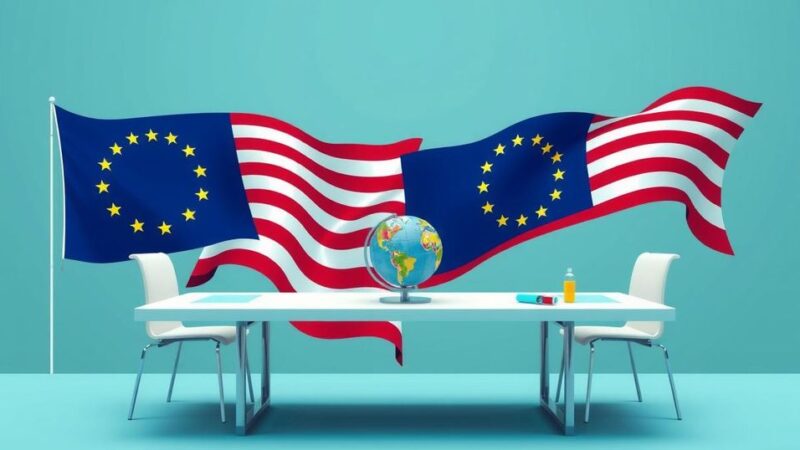President Trump announced a 26% “discounted reciprocal tariff” on imports from India, part of targeted measures against 60 countries. This initiative aims to rectify perceived trade imbalances while promoting US manufacturing. The Indian government is expected to respond, amidst ongoing negotiations aimed at enhancing bilateral trade by 2030.
US President Donald Trump has implemented a 26% “discounted reciprocal tariff” on all imports from India, as part of a broader strategy directed at 60 countries deemed to maintain unfair trade practices against American products. He announced this measure during a speech at the White House on “Liberation Day,” aimed at balancing international trade and boosting domestic manufacturing. A baseline tariff of 10% on all US imports will accompany higher rates for the targeted countries, including India, China, and various EU nations.
In his announcement, Trump stated that the discounted tariff for these specific countries is half the duties they currently impose, although details on how these figures were calculated remain unclear. He highlighted the discrepancies in tariffs, noting that while the US applies a 2.4% tariff on motorcycles, India charges up to 70%. Trump emphasized this point by remarking on the difficulties faced due to India’s high tariffs on automobiles.
The Indian government is expected to respond to these tariffs, although the announcement may be delayed due to Prime Minister Modi’s travel schedule. Both leaders previously set a goal to increase bilateral trade to $500 billion by 2030 and have agreed to negotiate a multifaceted bilateral trade agreement (BTA) by 2025. This agreement aims to enhance trade across various sectors, reduce barriers, and integrate supply chains.
Recent reports indicate that total trade between India and the US amassed $129.2 billion in 2024, with Indian exports totaling $87.4 billion. The US’s reciprocal tariffs for major trading partners reflect varying rates: 34% for China, 20% for EU nations, and lower rates for countries like Australia and Singapore.
Trump asserted that there would be no tariffs for companies that manufacture within the US, urging trading partners to abolish their tariffs, cease currency manipulation, and increase their imports of American goods. He claimed that the threat of these tariffs has already generated significant investments in the US economy. However, industry experts are expressing concern, warning that these tariffs could lead to trade wars, adversely affecting the global economy.
In summary, President Trump’s introduction of a 26% tariff on Indian imports is part of a broader strategy targeting unfair trade practices among 60 nations. This policy aims to balance trade and boost US manufacturing, sparking significant dialogue on international tariffs and potential retaliatory measures. As both nations strive towards increased economic collaboration, the evolving dynamics may have lasting implications on global trade practices.
Original Source: www.hindustantimes.com






